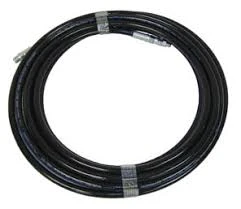crc ac charge refrigerant r134a refill & hose
Understanding CRC AC Charge Refrigerant R134a Refill and Hose
Air conditioning systems are a fundamental part of modern vehicles, providing comfort and convenience to drivers and passengers alike. Over time, these systems can lose refrigerant, leading to decreased efficiency and even failure. One of the commonly used refrigerants in automotive AC systems is R134a. In this article, we will explore the process of refilling refrigerant using the CRC AC Charge, how to properly connect hoses, and the best practices for maintaining your vehicle’s air conditioning system.
What is R134a?
R134a, or tetrafluoroethane, is a hydrofluorocarbon (HFC) refrigerant that has been widely used in vehicle air conditioning systems since the late 1990s. It replaced R12, which was found to be harmful to the ozone layer. R134a is less harmful and has a much lower ozone depletion potential (ODP). However, it is still important to manage it responsibly, as HFCs can contribute to global warming.
Understanding the CRC AC Charge
CRC is a well-known brand in the automotive maintenance industry, and their AC Charge products are designed to easily refill refrigerant in vehicle air conditioning systems. The CRC AC Charge featuring R134a typically comes in a can with a built-in pressure gauge, which allows users to monitor the pressure of the AC system. This is crucial because it helps to ensure that the system is not overfilled, which can lead to further issues.
How to Refill R134a Using CRC AC Charge
Before diving into the refilling process, it's essential to gather the necessary tools. You will need
- CRC AC Charge can with R134a - AC gauge (often built into the can) - Hose with the proper fittings - Safety goggles and gloves
Here’s a step-by-step guide on how to refill your AC system
1. Safety First Always wear safety goggles and gloves when handling refrigerants to protect against potential skin and eye contact.
2. Locate the Low-Pressure Service Port Identify the low-pressure service port of your AC system. This is typically found on the larger diameter metal tubing between the evaporator and the compressor.
crc ac charge refrigerant r134a refill & hose

3. Attach the Hose Connect the hose from the CRC AC Charge can to the low-pressure port. Ensure that the connection is solid to prevent any leaks.
4. Check Pressure Before adding refrigerant, check the pressure gauge. It’s critical to assess the current pressure level to determine if a refill is indeed necessary.
5. Add Refrigerant Open the valve on the can to start releasing the refrigerant into the system. While doing this, monitor the pressure gauge closely to ensure it stays within the recommended range (generally between 30-40 PSI for a properly functioning system).
6. Shake the Can Occasionally shaking the can while refilling can help ensure a steady flow of refrigerant into the system.
7. Monitor Changes Throughout the process, keep an ear out for changes in the sound of the AC compressor and check for cold airflow from the vents.
8. Disconnect and Inspect Once you have added the recommended amount of refrigerant, turn off the valve, disconnect the hose, and make sure the caps on the service ports are securely closed.
Best Practices for AC Maintenance
Maintaining your vehicle’s air conditioning system is crucial for its longevity and efficiency. Here are a few best practices
- Regular Inspections Have your AC system inspected before summer starts to catch any potential issues early. - Keep it Clean Ensure that your AC’s condenser coils are free from debris to facilitate proper airflow. - Use the System Regularly Run your AC system for at least 10-15 minutes once a month, even during colder months, to keep the lubricant circulating and prevent seals from drying out.
Conclusion
Refilling your vehicle’s AC system with R134a using CRC AC Charge can be a straightforward task when done correctly. Understanding how to connect the hose properly, monitor pressure levels, and perform regular maintenance can help ensure your air conditioning system runs efficiently. Always prioritize safety and follow manufacturer guidelines to keep your system in optimal condition. With proper care, your AC will continue to provide cool comfort for many miles to come.
-
Ultimate Spiral Protection for Hoses & CablesNewsJun.26,2025
-
The Ultimate Quick-Connect Solutions for Every NeedNewsJun.26,2025
-
SAE J1401 Brake Hose: Reliable Choice for Safe BrakingNewsJun.26,2025
-
Reliable J2064 A/C Hoses for Real-World Cooling NeedsNewsJun.26,2025
-
Heavy-Duty Sewer Jetting Hoses Built to LastNewsJun.26,2025
-
Fix Power Steering Tube Leaks Fast – Durable & Affordable SolutionNewsJun.26,2025

